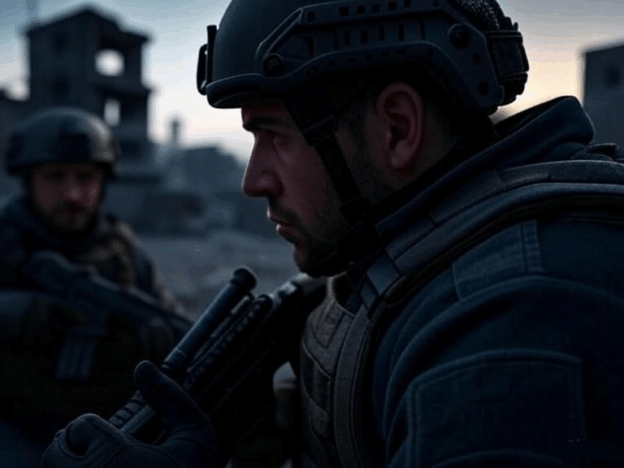In competitive Counter-Strike 2, the economy system is not just a background mechanic – it’s the silent architect of victory or defeat. Force-buy rounds, where a team invests nearly all remaining funds into cheaper weapons and limited utility, are the high-risk, high-reward gambits that can turn the tide of a match. Mastering these rounds requires a blend of game sense, team discipline, and a deep understanding of CS2’s evolving meta.
The Strategic Purpose of Force-Buys
Force-buys aren’t just acts of desperation; they are calculated disruptions to your opponent’s rhythm. A successful force-buy can:
- Break the enemy’s economy, forcing their own low-buy situation.
- Swing momentum in your team’s favor, shifting the psychological balance.
- Allow for early map control or critical round wins when a full save would hand over the initiative.
Historically, legendary teams have built reputations on their force-buy prowess. The sight of pistols and SMGs shredding a fully bought squad has long been one of Counter-Strike’s most dramatic moments.
Weapon Selection: Maximizing Value for Minimal Cost
When resources are tight, weapon choice becomes critical. The meta in CS2 favors certain force-buy staples:
- Desert Eagle – unmatched one-shot potential at long range; thrives on precision aim.
- Tec-9 / Five-SeveN – high fire rate and mobility, ideal for close-range bursts.
- MP9 – cost-effective SMG for aggressive defensive holds.
- Galil AR / FAMAS – mid-tier rifles that balance firepower with affordability.
A disciplined team doesn’t just buy randomly; they coordinate weapons to create complementary strengths. For example, pairing a Deagle sharpshooter with SMG entry fraggers can open space for trades and site control.
Utility Priority: Every Dollar Counts
Grenades in a force-buy round can be worth more than the weapons themselves. With only $1,000–$1,500 to spare for utility, prioritize:
- Smoke Grenades – to block sightlines, delay pushes, or fake rotations.
- Flashbangs – to create burst opportunities or retake advantages.
- Molotovs/Incendiaries – for post-plant denial or slowing enemy advances.
Skipping armor for an extra smoke is rarely worth it; survivability directly impacts your ability to secure frags and trade effectively.
Map Control and Tempo
Force-buys thrive on unpredictability. Instead of default setups, consider:
- Stacked Bombsites – gamble plays that overwhelm attackers.
- Early Aggression – surprising the enemy before they can leverage superior rifles.
- Mid-Round Rotations – keeping the opponent guessing and wasting their utility.
On smaller maps like Mirage, coordinated pushes into key choke points can yield rifles for your team. On larger maps like Ancient, holding close angles with pistols maximizes your weapon’s strengths.
Psychological Warfare
Winning a force-buy is as much about morale as it is about the scoreboard. Teams that repeatedly lose to half-buys start second-guessing their decisions, overusing utility, and hesitating on executes. Maintaining composure after losing a force-buy is vital—but equally, capitalizing on the mental blow you’ve dealt is a mark of elite play.
Interestingly, the betting community often reacts sharply to force-buy wins, as they disrupt expected match outcomes and shift live odds dramatically.
Common Mistakes to Avoid
Even experienced teams falter in force-buy rounds due to:
- Overconfidence after an early pick – leading to reckless peeks.
- Poor spacing – making trades impossible.
- Over-investment in utility – leaving players under-armed.
- Predictable setups – allowing the enemy to adapt and exploit weaknesses.
Recognizing these pitfalls—and training to avoid them—is the hallmark of consistent force-buy success.
Training for Force-Buy Mastery
Preparation is everything. Elite squads incorporate force-buy scenarios into their scrims, practicing:
- Coordinated rushes with pistols and flashes.
- Crossfire setups with mixed weapons.
- Communication drills to quickly adapt to in-round developments.
Demo review is equally crucial. Studying how top-tier teams, like FaZe or Vitality, turn scraps of an economy into full-blown round victories provides both inspiration and practical insight.
Adapting to the CS2 Meta
The transition from CS:GO to CS2 brought subtle but important shifts:
- Weapon handling changes have altered close-range spray dynamics.
- Updated map layouts create new force-buy choke points.
- The revised economy balance makes losing bonus management more critical.
Teams that understand these nuances can craft force-buy strategies that are tailor-made for the current meta rather than relying on outdated CS:GO-era habits.
Conclusion: The Art of the Unlikely Victory
Force-buy rounds embody the drama, strategy, and volatility that make CS2 such a compelling esport. They reward sharp aim, fearless execution, and the willingness to defy conventional expectations. More than just “half-buys,” they are deliberate acts of competitive rebellion—statements that even with the odds stacked against you, victory is still within reach.
In the long arc of Counter-Strike history, some of the most celebrated moments have come from these improbable wins. Master them, and you not only steal rounds—you steal momentum, confidence, and the very soul of the match.
